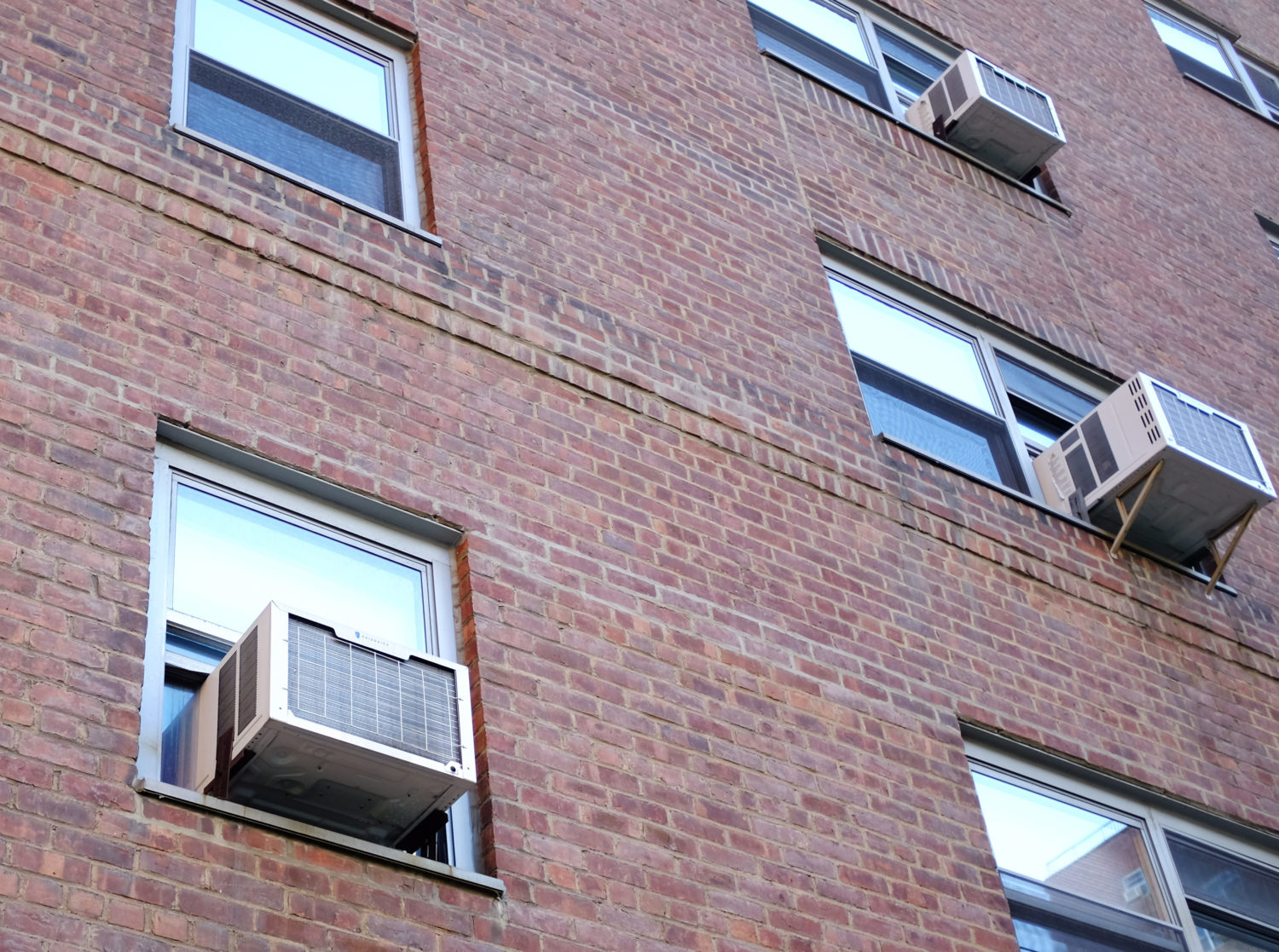By Will DiMaggio, Building Energy Exchange
On June 26, weeks ahead of a record-setting heat wave, New York City Council introduced a technical amendment to Local Law 97, legislation placing greenhouse gas emissions limits on the City’s largest buildings. These emission mandates are the centerpiece of New York City’s Climate Mobilization Act, an ambitious legislative package aimed at meeting the state’s 2050 carbon neutrality goals.
Tied to the City’s climate policy is New York State’s electric grid – a complex network of power plants, distribution networks, system operators, and policy makers that determine how (and if) your AC will be powered during the hottest days of the summer, and at what cost.

The Cost of Electricity
Not all electricity is created equal. Electricity generated during times of high demand – like a summer heat wave prompting widespread air conditioner use – is far more costly and carbon-intensive than business-as-usual generation. In contrast, excess electricity generated during periods of low demand, is cheaper and often less carbon-intensive.
This spread depends on the electricity grid’s resource mix: coal and natural gas, nuclear, hydropower, solar and wind energy, each with associated costs and emissions. In New York, emissions rise with demand in part due to gas-fired “peaker” plants, costly and inefficient power plants used during times of high demand when the base-load capacity is surpassed. These aging, fossil fuel-based peakers, sometimes used only a few days a year, are designed to switch on quickly, but operate at significant environmental and financial cost. To aggravate matters, many of these plants are scattered around the New York City area, placing much of the environmental burden, in the form of local air pollution, on the state’s most densely populated urban communities.
Time of Use
Following City Council’s technical amendment, building owners now have a pathway to capture these varying environmental costs of electricity generation across time of use.
This change appears under section 28-320.3.1.1, Greenhouse gas coefficient of energy consumption for calendar years 2024 through 2029, amidst a set of minor clarifications. “Utility electricity consumption, previously assigned a constant emissions factor, may now… …be calculated based on time of use in accordance with referenced emissions factors promulgated by rules of the department.”
In other words, building owners who shift away from consuming electricity during high-demand, carbon-intensive time periods can reap the benefits of low-emissions electricity when accounting for their building’s emissions. Use electricity overnight instead of during the day, shift use from hot summer days to cooler ones, and reduce your emissions – in real terms and on paper.
Managing Peak Demand
This time-of-use amendment aligns the City’s climate policy with the efforts of utility providers to better manage peak demand. Around the country, utilities have implemented conservation-oriented programs that communicate the real price of electricity generation to consumers – think congestion pricing for energy. These programs attempt to curtail peak demand by incentivizing and coordinating consumers to reduce their electricity use through price signaling.
In New York, NYISO’s Demand Response program provides price incentives for the state’s largest commercial and industrial users, realizing a 1,237 MW of load reduction (or 4.2% of summer peak demand) in 2017. ConEdison’s Time-of-Use Rates program links the price of electricity to time of day; their new Smart Energy Plan pilot program rewards users for efficient, time-sensitive electricity use with the help of smart meters.
Determining Emissions Factors
City agencies will be charged with determining time-of-use emissions factors across various compliance periods, with the expectation that factors will shift as we de-carbonize the grid. The decommissioning of Indian Point nuclear power plant, contracts awarded for two massive off-shore wind projects, and tentative deals with Canada on the transmission of carbon-free Quebec hydropower to New York City, will all have profound impacts on the grid’s future emissions factors. Energy storage, which can be used to store renewable energy during times of excess production and deploy it during times of high demand, is poised to both lower emissions and mitigate the negative impacts of peak demand.
Adding to the complexity of forecasting emissions factors is electrification, or the widespread conversion of gas-fired building systems (along with transportation) to electric ones as a means of limiting carbon emissions and local air pollution. As the electric grid becomes greener, so do buildings that rely solely on electricity to power their appliances, condition their spaces, and heat their water. In addition, efficiency gains from the use of advanced electric technologies may reduce overall energy consumption – some suggest as much as 20% by 2050 – in a highly electrified U.S.
Yet, electrification means that a much larger share of our energy demands will fall on our country’s electricity grids – as much as 38% by 2050 – both amplifying and shifting peak demand as electric heating during the winter eclipses summer cooling demand across certain regions. In this scenario, time-of-use policies, along with mass deployment of energy storage, will be integral in smoothing the peaks and valleys of grid demand.
The Future of the Grid
Energy efficiency projects, renewables, and storage are likely to reduce reliance on our dirtiest, most costly power plants, lessening the need for time-of-use emissions factors. Yet, electrification may prolong the challenges of peak demand. In a perfect future, a de-carbonized grid will correct for these issues; in the interim, more perfect utility information, deployed by demand-response programs with sophisticated metering technology and user interfaces, will help support a more transparent, reliable, and low-carbon grid for New York.
—
To read the Local Law 97 technical amendment, click here.
For more on a fully-electrified United States, see National Renewable Energy Laboratory’s Electrification Futures Study.
Have CMA questions? Visit our Climate Mobilization Act Series portal.